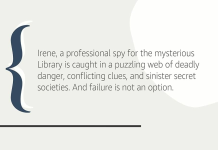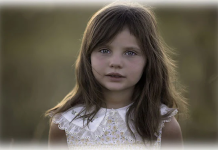That Time I Tried Shooting EMT Scenes Like a Pro
Okay, so yesterday I got this wild idea after seeing some super intense emergency response photos online. I was like, “Man, I wanna capture stuff like that! Looks powerful!” Grabbed my old but kinda reliable DSLR, threw an extra battery and memory card in my bag – learned that lesson the hard way last summer, let me tell you – and just headed out. Didn’t have a plan, just figured I’d find something cool.
First stop was this local fire station. Knocked on the door, kinda nervous, you know? Told the guy who answered I was just practicing photography, asking if they ever had public demos or anything I could maybe hang around for. Got this polite but firm “nope, sorry buddy, too much liability stuff.” Couldn’t blame ’em, really. Bummer.
Wandered downtown for a bit, feeling a bit dumb. Saw an ambulance pull over near a cafe, lights flashing. My heart jumped! Rushed over, camera already up to my eye. The EMTs were helping someone who just slipped on the sidewalk, seemed minor. Clicked a couple of shots from maybe 15 feet away. One of the EMTs instantly looked up and gave me the stink eye. “Hey, private medical situation here, pal. Back off.” Felt my face go hot. Packed the camera away quick, mumbled an apology. Totally didn’t think about privacy like that. Pain in the ass lesson right there.
Decided plan A sucked. Needed to stop being a fly on the wall hoping for chaos. Went home, sat at my kitchen table feeling kinda stupid. Remembered my neighbor, Sarah? She volunteers as a Community First Responder! Shot her a text: “Hey Sarah, know this sounds weird, but… wanna let me shadow you sometime while you’re training? Want practice taking pics in those kinds of scenarios?”
Turns out, she was totally cool with it! She even invited me to their next skills drill night at the community center. This felt different.
Showed up Wednesday evening. I talked to the lead instructor first, explained what I wanted to do. Made it clear: “I won’t get in your way, won’t post anything identifying without permission, totally just learning.” He said okay as long as Sarah vouched for me.
Man, watching them practice CPR drills, splinting mock injuries, even using the AED trainer… it was intense! My hands were shaky at first. Tried focusing on the details, not faces:
- Hands doing chest compressions, real pressure showing
- Close-up on the focused look while hooking up training wires
- The tools laid out on the mat, all organized, ready to go
- Boots firmly planted, that posture of being ready to move
Used a higher ISO because the gym lights were garbage. Kept moving, trying different angles – low down near the mat, sideways during bandaging, getting the blur of motion while someone practiced rolling a “patient”. Stopped every few minutes to show Sarah and the instructor the shots on my screen. “Does this feel respectful? Too close? Bad angle?” Got lots of feedback.
The big moment? They simulated a multi-casualty drill. Controlled chaos! Sarah was directing traffic while applying pressure to a fake wound on someone’s leg. I ducked low, framed her kneeling with another responder coming up behind her holding supplies, the urgency clear without showing panicked faces. That one shot… it felt like I finally got it. Not just the action, but the teamwork, the focused energy.
Afterwards, sat with a couple of them showing the best photos on my laptop. They actually dug the perspective! Said it showed the work, not just the drama. One guy even asked if he could get a print of the multi-casualty drill shot for his locker. Felt pretty awesome.
The Real “Extra Mile” Stuff That Worked
- Ditching the “ambush” approach: Trying to grab shots on the fly during real calls? Terrible idea. Stresses everyone out and disrespects privacy.
- Finding an “in” through connection: Knowing Sarah was the only reason I got access. Build relationships, don’t just show up demanding things.
- Respect trumps the shot, every time: Showing the photos constantly, asking “Is this okay?” builds trust. Privacy ain’t a buzzkill, it’s the job.
- Focus on the universal details: Hands, gear, posture, focused eyes… that’s where the story really lives. You don’t need faces screaming.
- Practice makes less nervous: Shaking lessens when you’re focusing on composition and light instead of sneaking around.
So yeah, becoming an “amazing EMT photographer”? It’s way less about the fancy gear or perfect settings. It’s about sweating the small stuff on respect, putting in the time to build trust, and genuinely trying to show the real work happening – not just the flashing lights. Kinda hard, kinda frustrating at points, but man, getting that one good shot that actually meant something? Worth the hustle. Gotta go the extra mile before you even pick up the camera.









